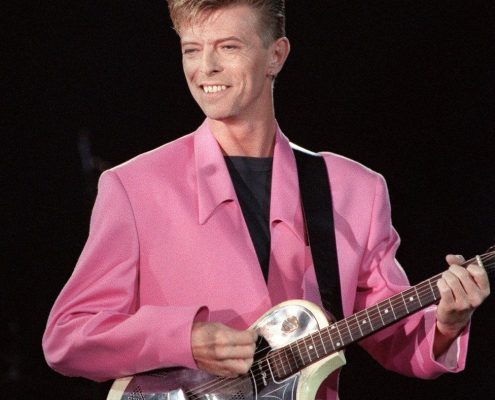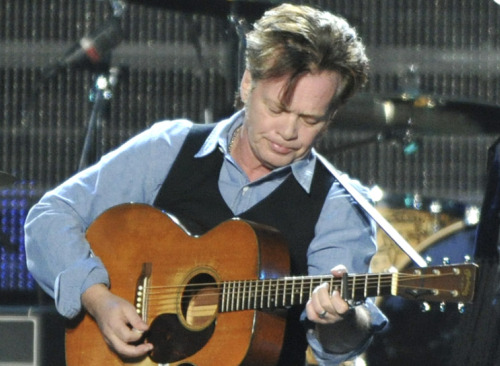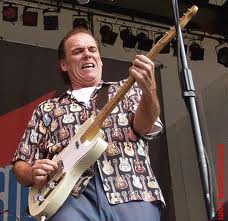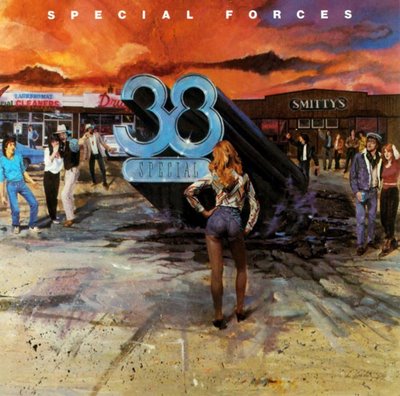David Bowie- Let’s Dance
Well before Let’s Dance by David Bowie came out in April 1983, we already knew that rock’s original Moon Child would change sound, style, and musician personnel seemingly like lunar phases. Granted, for the preceding four releases Bowie had been working with ex-Roxy Music innovator Brian Eno as producer on cutting-edge sounds in Berlin and, while later to be cited as highly influential by many others, their success in America was uncharacteristically mid-chart. Let’s Dance flipped that focus back to American roots with one listen. .
David Bowie’s most popular album, Let’s Dance, a playful imperative released in April 1983, is one which Rolling Stone magazine would later describe as “the conclusion of arguably the greatest 14-year run in rock history.” Selling just under eleven million copies,The title song “Let’s Dance” was the #1 song in the US and UK, a first and only for David’s five decade career, while “Modern Love” and “China Girl” both reached #2 in his native England. And let us not forget that in mashing up the blues with the New Romantic sound, a musical style which ironically he himself had completely influenced with his Berlin trilogy of Heroes, Low, and Lodger, David Bowie introduced us to then-unknown Texas guitar playerStevie Ray Vaughan on Let’s Dance.
A lot has changed since April 1983, not the least of which is in the areas of communication, information, and entertainment. So it was no surprise that multi-media maven David Bowie, who seemed tailor-made then for the dawn of the MTV era in America when Let’s Dance was released, would later be among the first to embrace computer-generated gaming and virtual reality, which David discusses at length here.  As much as fifteen years before he would be diagnosed and eventually succumb to liver cancer in January 2016, you will hear in this conversation that David Bowie felt that art is, in some ways, as effective as religion for some in helping to address life’s biggest questions.
As much as fifteen years before he would be diagnosed and eventually succumb to liver cancer in January 2016, you will hear in this conversation that David Bowie felt that art is, in some ways, as effective as religion for some in helping to address life’s biggest questions.
David Bowie’s birthday in January 2018 saw the release of a previously unreleased treasure, the actual demo for the 1983 title song to Let’s Dance. Now we lovingly present the encore interview with the late icon for the anniversary of that timeless album here In the Studio. But it was not the first time that David Bowie’s birthday presented us with musical surprises.
David Bowie’s first new album in almost a decade, The Next Day, was kept completely under wraps ever since his 2004 heart attack while on tour in Germany, dropped without any notice in 2015, and the reaction was unequivocally and universally positive. Remarkably free from artifice or trend, The Next Day was brimming with seventeen new songs framed by Ziggy-era producer Tony Visconti’s straightforward production in a way that focused attention on Bowie’s concise songcraft, wisely limiting the arrangements to nothing over four minutes. Then we had yet another new Bowie trove, Blackstar, arriving on his birthday in 2016.  But these were far from David Bowie’s first “comebacks”. In the late 1970s he emerged from a protracted period of self-imposed exile in Berlin where he had virtually co-opted the best elements of Kraut Rock (Kraftwerk, Tangerine Dream, Can, Amon Duul ) into a series of critically lauded if not best-selling albums Low, Lodger, Heroes, and Scary Monsters, whose influence can now be seen in full bloom in today’s wildly popular Electronica raves.
But these were far from David Bowie’s first “comebacks”. In the late 1970s he emerged from a protracted period of self-imposed exile in Berlin where he had virtually co-opted the best elements of Kraut Rock (Kraftwerk, Tangerine Dream, Can, Amon Duul ) into a series of critically lauded if not best-selling albums Low, Lodger, Heroes, and Scary Monsters, whose influence can now be seen in full bloom in today’s wildly popular Electronica raves.
When Bowie’s Let’s Dance emerged in Spring 1983, the seven minute title strut put David back in heavy rotation on North American rock radio where he had been MIA since his previous “comeback” to rock, 1976’s #1 seller Station to Station. Sitting with David Bowie In the Studio in his beloved New York City, just twelve hours after he had thrilled a packed Kit Kat Club with an electrifying performance streamed live on the burgeoning World Wide Web back in November 1999, he glides and pirouettes through a myriad of topics while sharing “China Girl”(co-written with Iggy Pop),”Modern Love”,”Criminal World”, “Cat People”, and “Let’s Dance” featuring a young previously unknown Texas blues (!) guitarist named Stevie Ray Vaughan.
Wrestling with the reality of continuing in a world without the living presence of David Bowie is rendered a whole lot easier these days as we honor him with this in-depth one-on-one conversation In the Studio to celebrate Let’s Dance. Shall we? –Redbeard
</em









